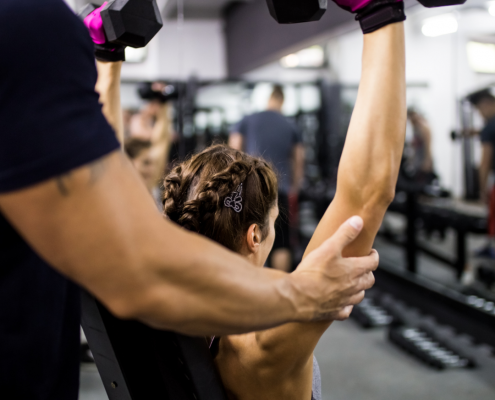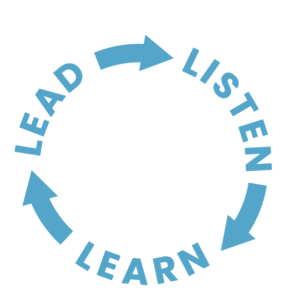Last Updated on October 31, 2024 by
Why safeguarding adults is every instructor’s responsibility [and how easy it is to implement]
As National Safeguarding Adult’s Week (21-27 November) approaches, it’s a great opportunity to reflect on your own safeguarding practices.
Are there things you could improve on?
Where do you need support?
Where can you go for assistance?
We have rounded up some key information you need to know about safeguarding adults. We’ve included top tips, support documents, and resources.
Just a quick note…
This blog we focus information on safeguarding adults. If you’re looking for information on safeguarding children, you can:
Visit the Child Protection in Sport Unit website
The Child Protection in Sport Unit (CPSU) was set up by the NSPCC. They help organisations safeguard children in sports and physical activities.
The website has some great resources, including training and self-assessment tools.
Use the EMD UK safeguarding children website section
Here you’ll find practical resources and templates to help your business. These include codes of conduct and information for parents.
Download ‘An instructor’s guide to safeguarding’ resource
This resource has been specifically written for group exercise instructors. It includes information from CPSU, the Ann Craft Trust, and EMD UK. Find out how you can implement a positive safeguarding culture in your fitness business. Download it for free here.
What is safeguarding
Safeguarding sounds complicated, but it’s very simple.
Safeguarding is a term used to describe the actions taken to protect individuals from harm. These measures particularly support children, young people, and adults at risk.
Put simply, safeguarding ensures everyone can attend the activities they like safely and without fearing harm from those around them.
Why is safeguarding important
Safeguarding is important because it protects people from harm.
As NHS England puts it:
“Safeguarding means protecting a citizen’s health, wellbeing and human rights; enabling them to live free from harm, abuse and neglect.”
Protecting adults from harm allows them to physically, mentally and socially thrive, enjoying the activities they love.
You may know about safeguarding and understand it, but that’s not enough. It’s your job to have policies and procedures in place to protect your clients and your business.
Why it’s your responsibility
As a group exercise instructor, you have a duty of care to your class attendees. In the same way that you try to keep them from accidents by doing risk assessments, there are things you can do to help keep them safe from harm.
The Care Act 2014 put the safeguarding of adults on a statutory footing. If your organisation has regular contact with the public, you have a crucial role to play in the support, identification and reporting of adults who may be at risk of harm.
You must actively work to prevent abuse from occurring within your organisation, and you must be prepared to respond proportionately if abuse or neglect has occurred.
Organisations that fail to do this risk failing to meet their duty of care, which at worst could leave adults at risk vulnerable to harm.
Who might abuse adults?
Ann Craft Trust sums this up:
“Abuse and neglect might be carried out by anyone in contact with adults, even by people employed to provide care.
There may be indicators that adults are experiencing harm from people within your organisation, such as volunteers, members of staff, or other members of the public. Or they may be experiencing harm from those connected with their life outside your organisation, such as a carer or a spouse.
This may include:
- Spouses, friends, family and neighbours
- People employed to provide care
- Paid staff or professionals
- Volunteers
- Strangers”
The policies and procedures your fitness business puts in place help to mitigate the places abuse may take place. Your classes can offer a safe space.
Did you know the law around safeguarding has been updated?
As of 28 June 2022, the law concerning positions of trust changed.
What is a position of trust?
Someone in a position of trust is a person in a position of authority or responsibility over another person. Those in positions of trust have a considerable amount of power and influence on a young person’s life.
For example, a young person may be dependent on their personal trainer, swimming teacher, coach or other adult for their sport and physical activity participation, development or progression.
What changed?
Sections 16 to 19 of the Sexual Offence Act 2003 (the Act) state that it is illegal for an adult in a position of trust to be involved in sexual activity with a person who is 16 or 17 years old and who they look after.
Although young people aged 16 and 17 have reached the age of consent for sexual activity according to UK law, they could be vulnerable to sexual abuse and exploitation in certain situations. This includes sexual activity and manipulation by adults who hold a position of trust, responsibility, or authority in relation to them, and, as a result, have a considerable amount of power and influence on their lives.
The law changes have expanded to include adults in a position of trust, where an adult is coaching, teaching, training, supervising or instructing in a sport to a 16 or 17-year-old on a regular basis. This includes group exercise instructors.
Five ways you can make safeguarding adults simple in your fitness business
1. Evaluate your current situation
You don’t have to be a safeguarding expert, but it’s important to get the basics right. This starts with evaluating:
- The knowledge you currently have
- Your organisation’s commitment to safeguarding
- Your current policies and procedures
- Where you can go locally for emergency support
You can make this evaluation via Ann Craft Trust here and create an easy-to-follow action plan for your business too.
2. Ensure your policies and procedures are up to date
Your business will already have a number of policies and procedures in place; safeguarding should be one of them.
You should be reviewing your policy annually, along with all other policies and procedures in your business. This is to ensure all your information is still relevant.
It’s also a good idea to get any staff you employ or instructors who cover your classes to re-read these to refresh their knowledge too.
What if you don’t have a safeguarding policy yet?
It need not be difficult to write one from scratch. Ann Craft Trust have created a great resource of top tips for writing and implementing your policies and procedures. You can download these here.
3. Set out roles and responsibilities
If a safeguarding incident happened, who would you report it to?
Who is the safeguarding lead for your business?
Who could you call in a safeguarding emergency?
These are questions you (and your team) should be able to answer and underpin how you can effectively respond to safeguarding issues.
A safeguarding lead officer is the person responsible for overseeing safeguarding policies and procedures. They are also the person who can deal with any concerns and incidents. Officers lead by example, empowering everyone to have the confidence to speak up if they have concerns about something not right.
If you’re a team of one, then you will be the safeguarding lead officer. Ann Craft Trust has some great tips here on how you can be an empowered role model.
4. Create a safer culture
As a group exercise instructor, you want everyone who attends your classes to have the best possible experience. You want them to feel safe when they attend and leave feeling happy and positive. You want to offer them a space where they feel welcomed, where their concerns are listened to, and acted upon.
This is known as a safer culture.
There are three elements that create a safer culture, as told by Ann Craft Trust:
- Listen
An environment where everyone is confident their concerns are welcomed, listened to and addressed appropriately. - Learn
Where organisations encourage continuous learning and reflection at all levels. Applying this to improve and adapt. - Lead
Organisations should lead by example to empower everyone with the confidence to challenge and instigate change.
5. Get support from the experts
The Ann Craft Trust is here to help you in safeguarding adults. They have 30 years’ experience in safeguarding and offer a range of resources.
Your local area will have a Safeguarding Adults Board. This is usually made up of the local authority council and different organisations to keep at risk adults safe at a local level.
If you’re working with children, get support, training and resources from the CPSU.








